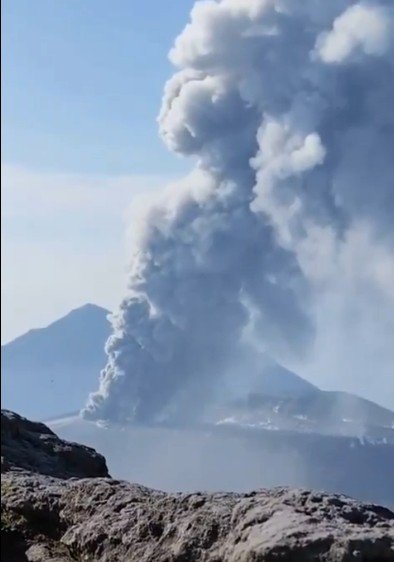Japan on High Alert as Shinmoedake Volcano Erupts
Japan has been thrust into a heightened state of alert following the powerful eruption of Mount Shinmoedake, part of the Kirishima volcanic range in southern Kyushu. On Thursday, July 3, at approximately 3:30 p.m. local time, the volcano erupted violently, sending a massive ash plume nearly 6.7 kilometers into the sky. This marks the first major eruption of Shinmoedake since June 2018 and follows a smaller preliminary blast on June 22 that signaled the end of the volcano’s seven-year dormancy.
In the days leading up to the eruption, seismic activity in the region surged. The Japan Meteorological Agency (JMA) recorded over 1,000 tremors, and a magnitude 5.5 earthquake struck near the Tokara Island chain just hours before the eruption. These signs prompted the JMA to raise the volcanic alert level to 3 on June 27, urging residents and hikers to stay away from the volcano.
Following the eruption, the JMA reinforced warnings, advising people to avoid the 3-kilometer radius surrounding Shinmoedake due to risks of falling volcanic rocks and pyroclastic flows. Authorities in Miyazaki and Kagoshima prefectures, which bore the brunt of the ashfall, called on residents to remain indoors, cover water supplies, and use masks to avoid inhaling fine ash particles. Roads, farmland, and homes in the region have been blanketed in ash, leading to disruptions in transportation and daily life.
The eruption has reignited concerns over Japan’s extensive volcanic network and its vulnerability to natural disasters. The event gained additional media traction due to a viral prediction from retired manga artist Ryo Tatsuki. In his 1999 book The Future I Saw, Tatsuki claimed to have experienced dreams predicting a major natural disaster occurring in early July 2025. Though Tatsuki has cautioned against interpreting his dreams as literal forecasts, his prediction has gone viral in recent weeks, leading to a wave of anxiety online and even a decline in tourism bookings to Japan.
Experts stress that while the timing of the eruption and earthquake is concerning, there is currently no direct evidence linking this activity to a broader volcanic threat. However, the situation remains dynamic. Japan sits atop the Pacific Ring of Fire and is home to over 100 active volcanoes, including the iconic Mount Fuji, which last erupted in 1707. Scientists continue to monitor seismic and volcanic data closely for any signs of escalating activity.
In the meantime, authorities are urging residents and visitors to stay informed through official channels and to prepare emergency supplies in case of further eruptions. With Shinmoedake now active once again, Japan’s attention has turned to its other sleeping giants — and whether they too might awaken.








